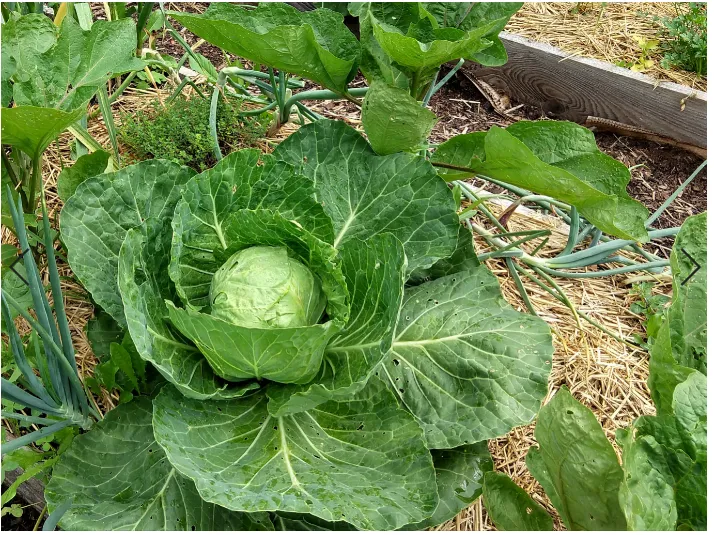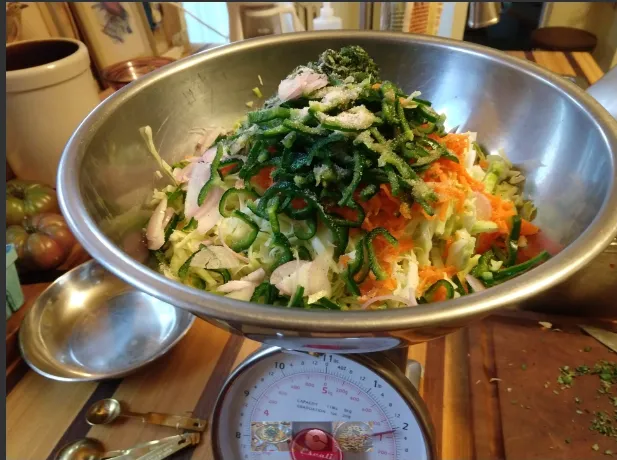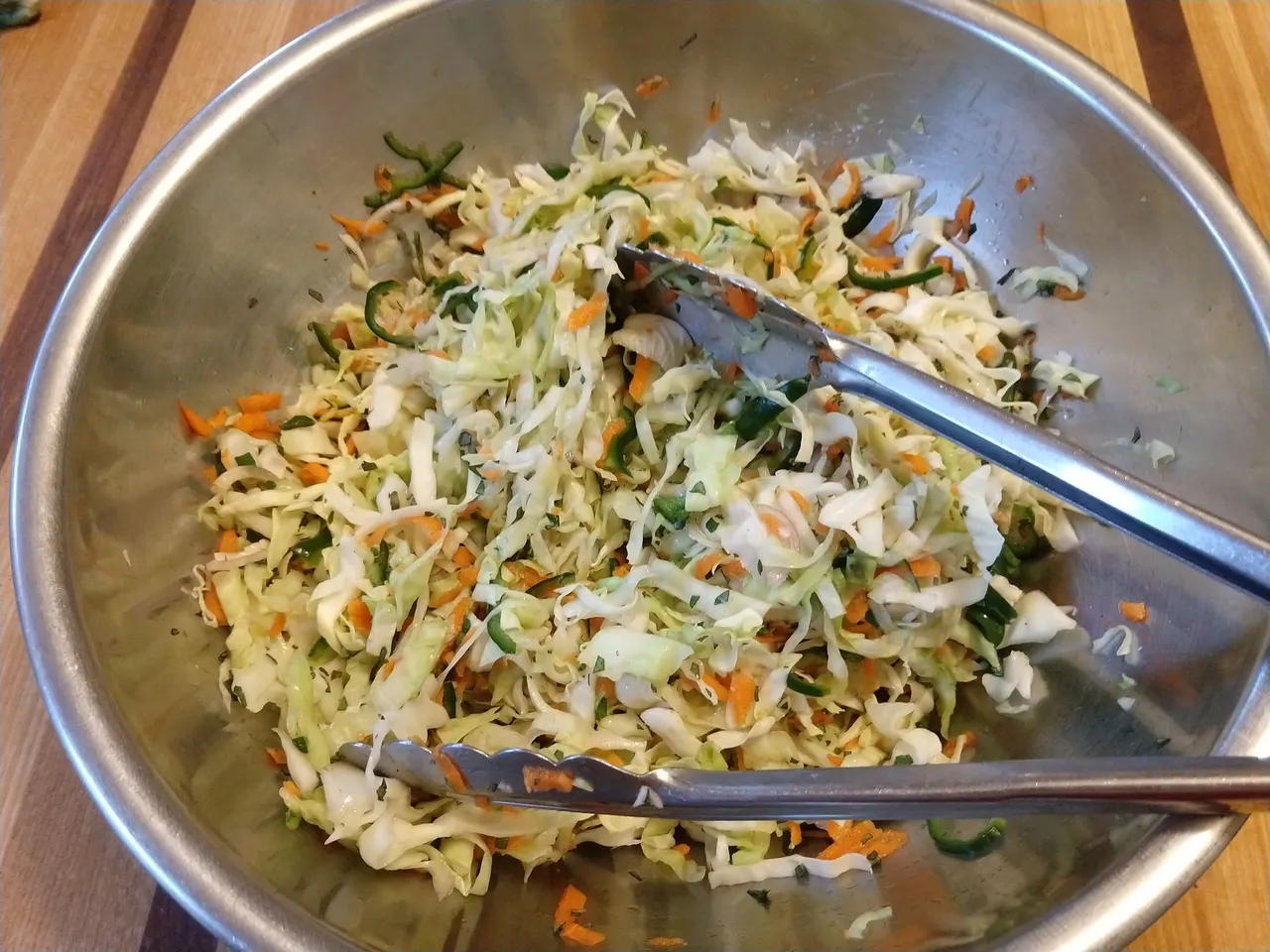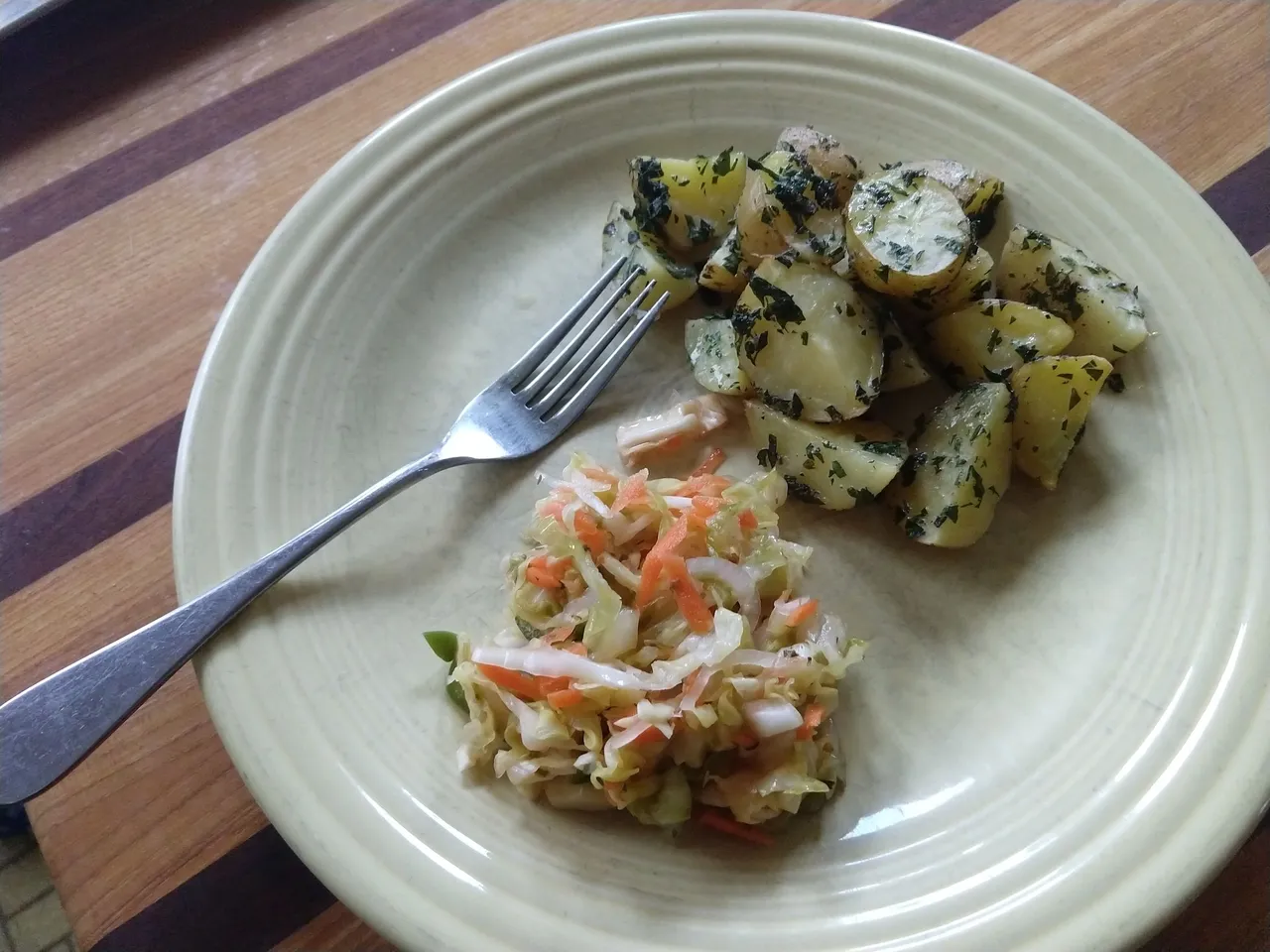

I cook a fair amount in my new home, because there is not one single good restaurant for 90 miles around. I'm not kidding. A couple of the local places serve edible food, and another serves good sandwiches but is only open twelve hours a week. I'm afraid that I, as a former restaurateur in New York City, am accustomed to eating food that is far tastier than just edible, and I eat when I'm hungry, not when lunch is being served downtown. I'm a food snob actually.
So, I cook. A lot.
I also have been smitten with the grow-your-own-food bug, in addition to the preserve-as-much-of-the-food-you-have-grown-as-you-can bug. If a recipe is easy, so much the better. If the recipe is super healthy as well as easy and very tasty, I'm in heaven.
Here is a recipe for Salvadoran Curtido (also spelled Cortido) that satisfies all those points: it's very easy, fermented for excellent health benefits, uses only veggies from my own garden, will last for months in the fridge, and is very, very tasty. I can't think of anything I would rather do with cabbage now that I have found this dish. Enjoy!
Note: the ratio of salt to veggies is important for proper fermentation. I have settled, after years of fermenting everything I could (rutabagas are really good fermented, as well as Jerusalem artichokes), on a ratio of two teaspoons of fine salt for every pound of prepared veggies. Folks get a little crazy with their salt calculations, because if you use too little salt the ferment will go off, and too much salt will stop the fermentation. There is quite a lot of wiggle room here though. I have had neither of those problems using my two teaspoons per pound of veggies, whether I use the dry salt method (the one I use here) or the salt brine method (discussed in the link I provide below).
Salvadoran Curtido
cabbage, 1 1/2 pound, sliced very thin or grated
carrot, a few, peeled and grated
poblano, 2 peppers, sliced thin
shallot, 1 large, sliced thin
fresh oregano, 1/4 cup, finely chopped
fine grain salt, 4 teaspoons
Mix all the veggies together and weigh them. Adjust the salt amount to two teaspoons per pound of veggies. I used Real Salt for this, but any type of natural, non-iodized, fine grain salt will do. Coarse grain or kosher will work as well, but I would use a tiny bit more.

Let the veggies sit for at least 30 minutes, tossing and squeezing them now and then, until the juices come out. Most recipes say 30 minutes for this step, but I let it sit for a good hour or two, squeezing it with those tongs. Some recipes would have you massage the veggies.
You want there to be enough liquid to barely cover the veggies when you press them down. For this batch, I had to add about half a cup of water, as my cabbage was somewhat dried out from having been stored for a good month.

Next, let the batch ferment for anywhere from one day to five days. How long depends on the temperature in your kitchen, and on your taste. The longer you leave it, the tangier it gets. I'm a three or four day gal on this stuff. It is possible to leave it too long though.
For the fermentation period, I put it all in a pickling crock, with weights on top to keep the veggies submerged. I'll let it ferment to taste then put it in a jar in my fridge, where it will last for a few months, if I haven't eaten it all well before then.

If you don't have a crock, you could just leave it in the bowl, with a plate on top to push the veggies down into the liquid. Or stuff it all into a quart mason jar, and press the veggies down into the liquid. In all cases, add more water if necessary to get all veggies covered with the liquid. Cover the whole shebang with a tea towel, a coffee filter, some cheesecloth, or a loose lid. Explosive gases will build up in that baby if you screw a lid on tight, unless it's a special fermenting lid, which you really do not need, but they look cool. I have tons of them stashed in a closet somewhere, unused for years now.
I can't get enough of this Curtido. I eat it with everything, and sometimes just on its own for a snack.
Here it is with roasted potatoes. This was a very yummy meal.

Here's a good general guide for salt ratios in different fermenting methods:
https://www.fermentationrecipes.com/using-measuring-salt-fermentations/1014
I hope you like this as much as I do!

page break by @thekittygirl